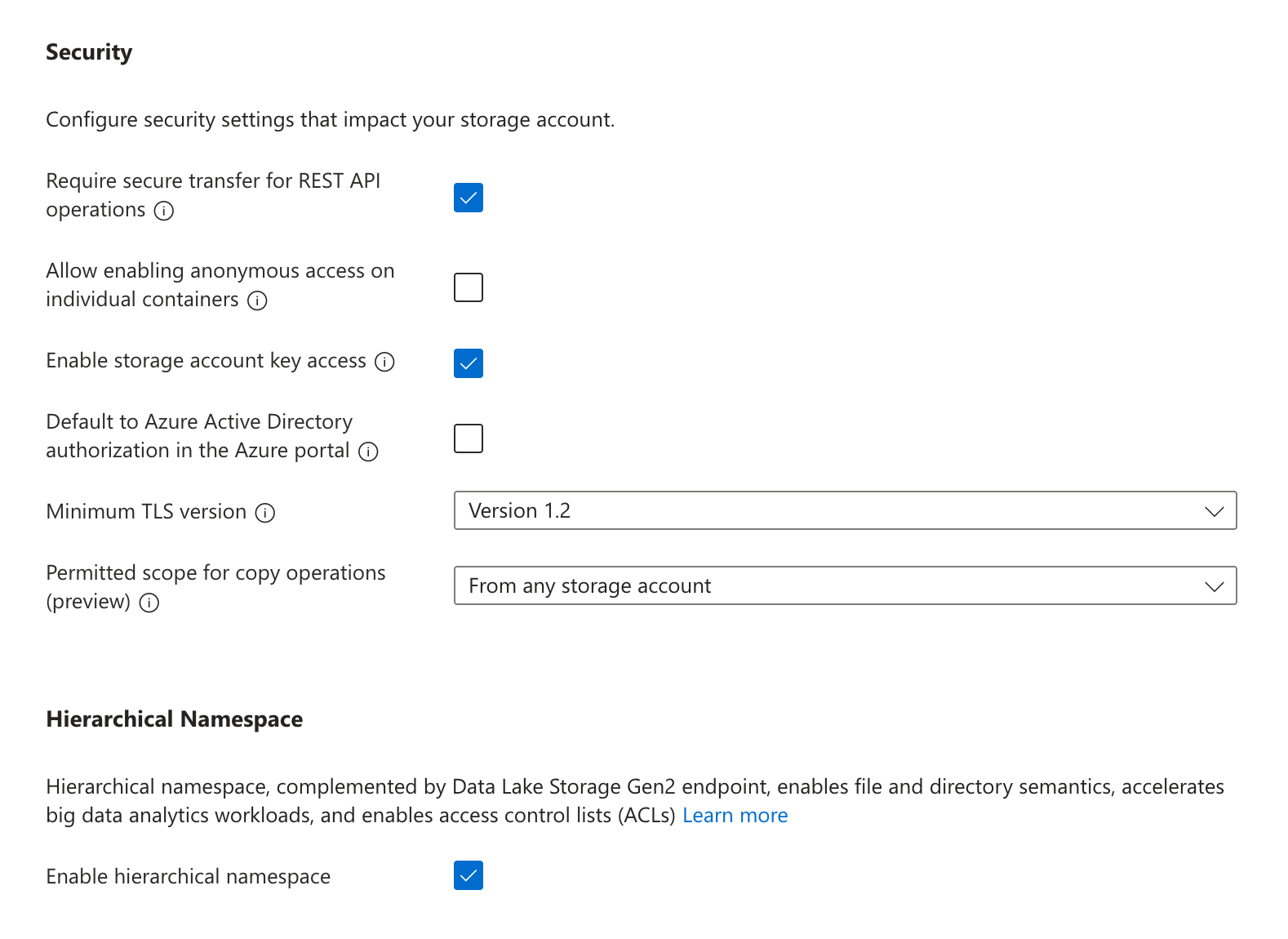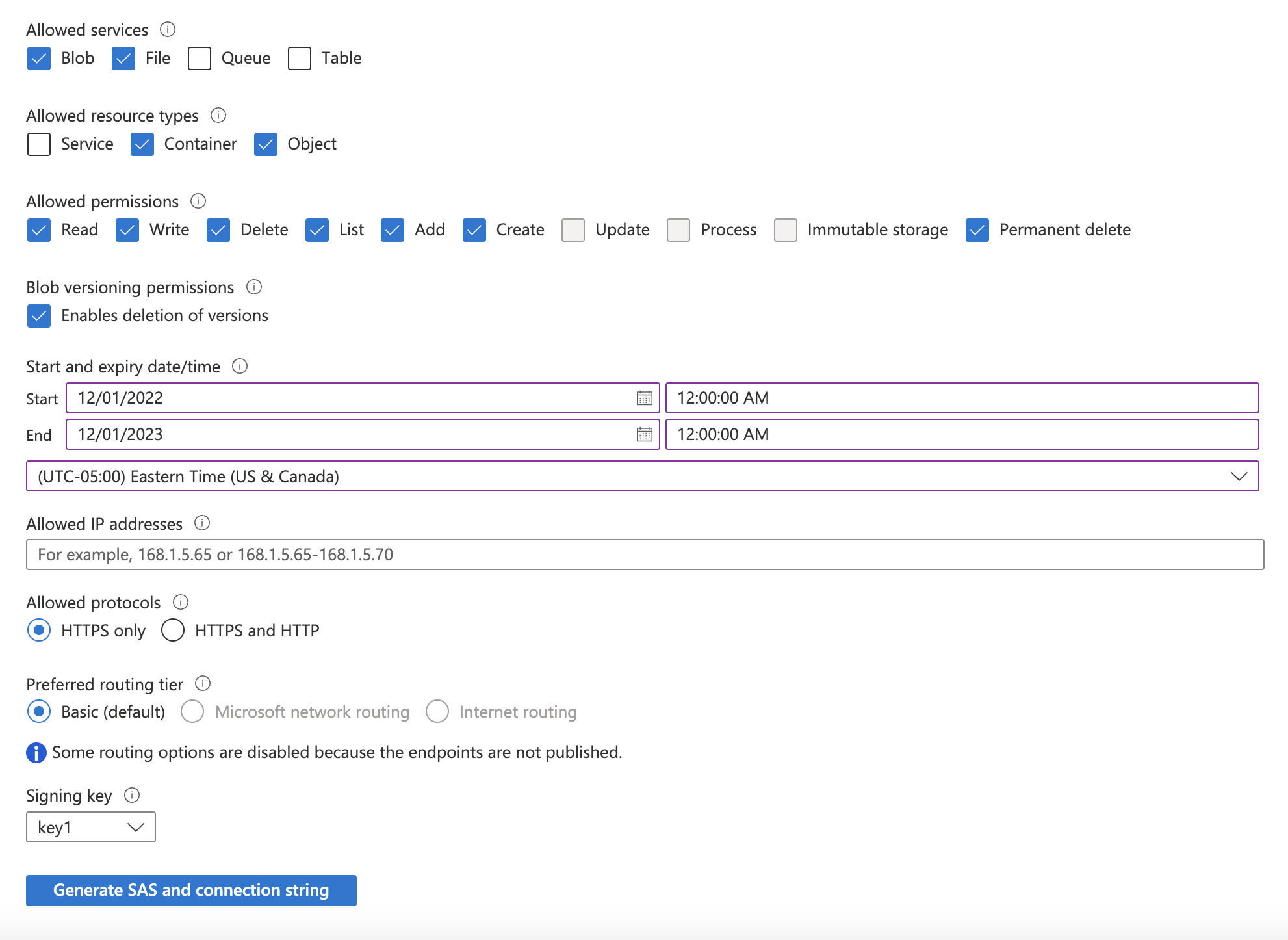Push-to-Warehouse Setup: Azure Blob Storage
In this guide, you will be setting up a connection to a data warehouse destination you own. Reach out to your Customer Success Manager or [email protected] to confirm that your Modern Treasury plan includes the Push to Warehouse capability.
Prerequisites
- Please reference our Push to Warehouse IP Address documentation.
Step 1: Create Azure storage account
- In the Azure portal, navigate to the Storage accounts service and click + Create.
- In the "Basics" tab of the "Create a storage account" form, fill in the required details.
- In the "Advanced" settings, under "Security" make sure Enable storage account key access is turned on. You may turn off (deselect) "Allow enabling public access on containers". Under "Data Lake Storage Gen2", select Enable hierarchical namespace.

- In the "Networking" settings, you may limit "Network access" to either Enable public access from all networks or Enable public access from selected virtual networks and IP addresses. If the latter is selected, be sure to add the service's static IP to the address range of the chosen virtual network. All other settings can use the default selections.
- In the "Data protection" settings, you must turn off Enable soft delete for blobs, Enable soft delete for containers, and Enable soft delete for file shares.

- Once the remaining options have been configured to your preference, click Create.
Step 2: Create container and access token
- In the Azure portal, navigate to the Storage accounts service and click on the account that was created in the previous step.
- In the navigation pane, under "Data storage", click Containers. Click + Container, choose a name for the container, and click Create.
- In the navigation pane, under "Security + networking", click Shared access signature.
- Update the required accessible services and permissions:
- Under "Allowed services": select Blob and File.
- Under "Allowed resource types": select Container and Object.
- Under "Allowed permissions": select Read, Write, Delete, List, Add, Create, and Permanently Delete.
- Select a "Start and expiry date/time" based on your security posture (e.g., set the expiration date 6 months into the future), and click Generate SAS and connection string.
- Make a note of the SAS token that is generated.

Step 3: Add your destination
Securely share your storage account name, container name, your chosen folder name for the data, and your Storage account SAS token with us to complete the connection.
Updated 12 days ago